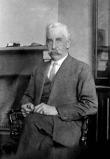Born: Established: 23 Jun 1860 Stretford, Manchester,
AustLit
 7211713442087613154.jpg
7211713442087613154.jpg
Source: University of Melbourne Archives
Baldwin Spencer
Baldwin Spencer
i(A3965 works by)
(a.k.a.
Walter Baldwin Spencer; Sir Walter Baldwin Spencer ; W. Baldwin Spencer)
Born: Established: 23 Jun 1860 Stretford, Manchester,
Born: Established: 23 Jun 1860 Stretford, Manchester,
c
England,c
c
United Kingdom (UK),c
Western Europe,
Europe,
;
Died:
Ceased:
14 Jul 1929
Patagonia,
c
Argentina,c
South America,
Americas,
Gender:
Male
Arrived in Australia:
30 Mar 1887
Departed from Australia:
ca.
1927
The material on this page is available to AustLit subscribers. If you are a subscriber or are from a subscribing organisation, please log in to gain full access. To explore options for subscribing to this unique teaching, research, and publishing resource for Australian culture and storytelling, please contact us or find out more.
BiographyHistory
Most Referenced Works
Notes
-
See also the full Australian Dictionary of Biography Online entry for Sir Walter Baldwin Spencer.
Last amended 23 Jun 2016 07:51:04

